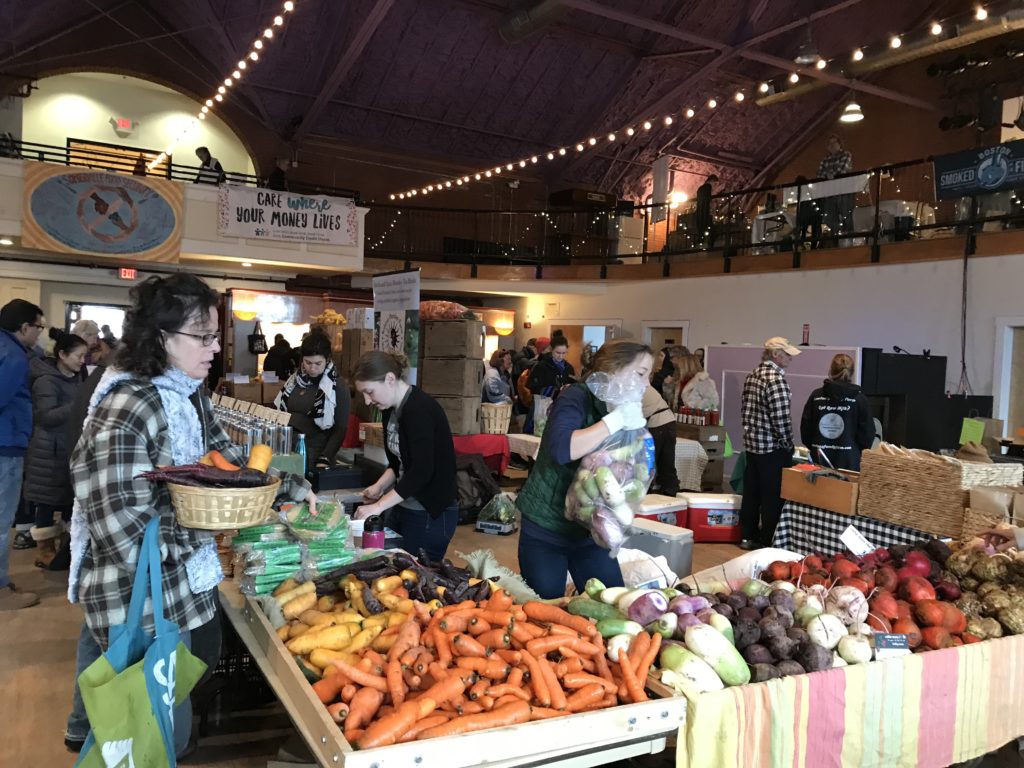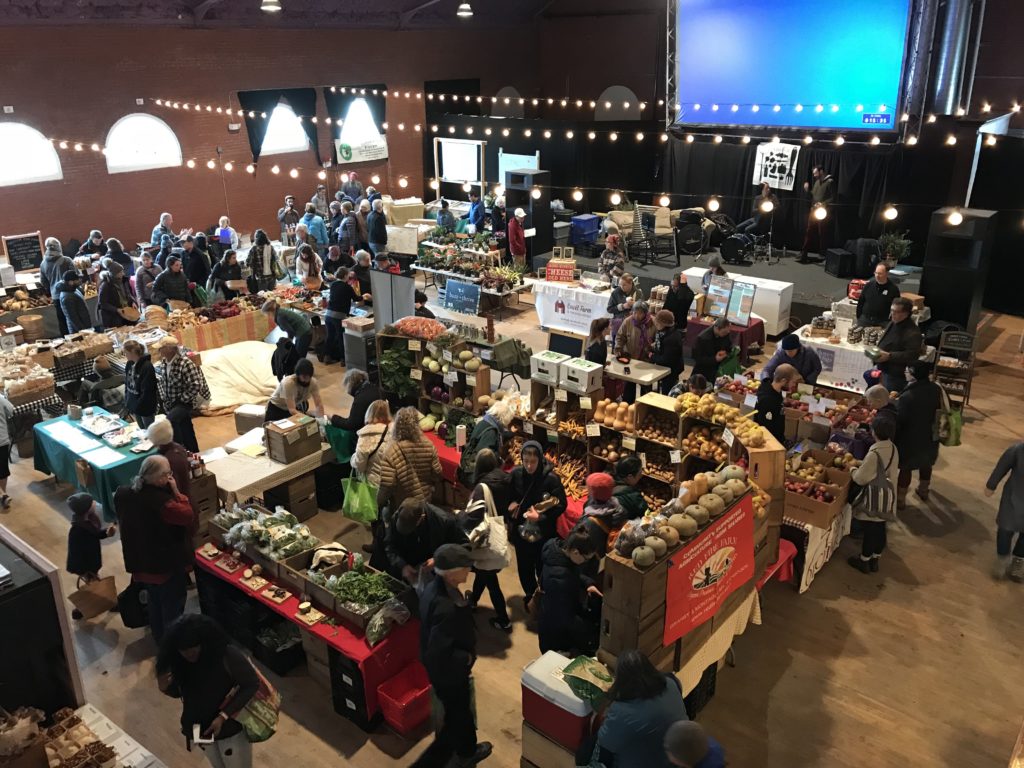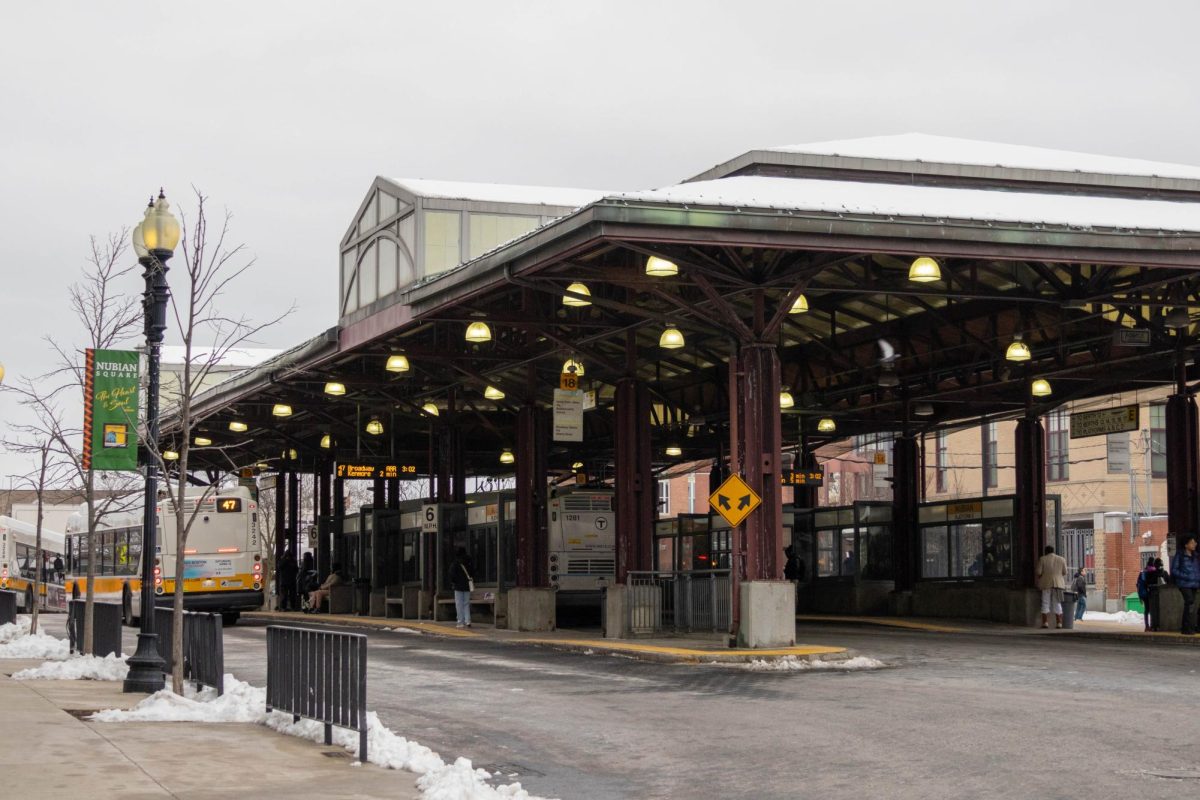By Julia Crooijmans, news correspondent
The Somerville Winter Farmers Market has made its annual comeback to continue making fresh and local produce more accessible to low-income families through the winter months.
The market takes place every Saturday from 9:30 a.m. to 2 p.m. inside the Center for Arts at the Armory. In this historic two-story building, approximately 35 vendors set up their tables and lay out their locally and regionally sourced produce — anything from organic fruit to grass-fed meat to homemade pastries. Accompanied by live music, the market brings in between 800 and 1,500 visitors each week. It is best advised to visit in the morning, as produce sells out and it is more crowded in the afternoon.
“When we first moved in, [the Armory] was vacant, but with the market here it has been great,” said Kim Schmidt, who lives in the neighborhood. “It really has grown. It is an amazing resource — a winter destination for most people in the community.”
What further distinguishes the Somerville Market is its participation in the Supplemental Nutrition Assistance Program, or SNAP, and Healthy Incentive Program, or HIP. These state-funded programs help make fresh fruits and vegetables from local and regional farmers more accessible to low-income families.
According to the Massachusetts Department of Agricultural Resources, every time someone spends SNAP dollars, previously called food stamps, on fruits and vegetables from a participating farmer or market, they earn HIP incentives. These incentives add up to a monthly maximum benefit which may then be spent on future SNAP purchases. The benefit ranges from $40 to $80 and is determined by household size.
“The cost of locally and environmentally friendly produced food can be really high, which can mean that people with lower incomes don’t feel comfortable spending as much money on that food,” said Jess Bloomer, deputy director and farm manager of Groundwork Somerville, which helps co-manage the market. “We felt that [participating in SNAP and HIP] is an amazing chance for us to say that regardless of your income, this food is for you.”
Bloomer said that the program will make food more accessible to low income families, encourage healthy eating choices and support the farmers — making it a win-win all around.

Chris Haskell, a vendor for Mycoterra Mushroom Farm, which is involved in SNAP and HIP, also vouched for both programs.
“I worry a lot that we are gentrifying food and making it out of the reach of people,” Haskell said. “I believe that the program has pushed the needle on getting people to actually buy good produce — they have started doing something they weren’t doing before. Whether that is going to translate into actual savings or health benefits, we’ll see later.”
Meanwhile, Chuck Currie, a vendor for Freedom Food Farm, said he still faces obstacles as a farmer in today’s agricultural industry.
“There are more and more challenges — less people know how to cook, [farmers] are facing more competition from Amazon, businesses are going to be delivering straight to people’s houses, the middle and lower class are getting poorer every year and society is devaluing food,” Currie said. “Overall, the percentage that we are spending on food has been lowering and lowering every year. That is another problem — convincing people that food is worth spending a third of your income on.”
Still, with the recent launch of SNAP and HIP there seems to be hope that the government will give further assistance to regional farmers in the future.
“We really want to see local officials, state officials and one day federal officials really advocating for these interventions, like HIP, which put money in farmers’ pockets,” Bloomer said.
As for now, the Somerville Winter Farmers Market will continue to rely on its tight-knit and diverse community to return each Saturday morning and restock on fresh produce until April 14.
“We really hope for this market to be a vibrant and important anchor of food access in our community and we really hope to more deeply root these commitments on the local and state levels and make it more accessible to our customers,” Bloomer said.










